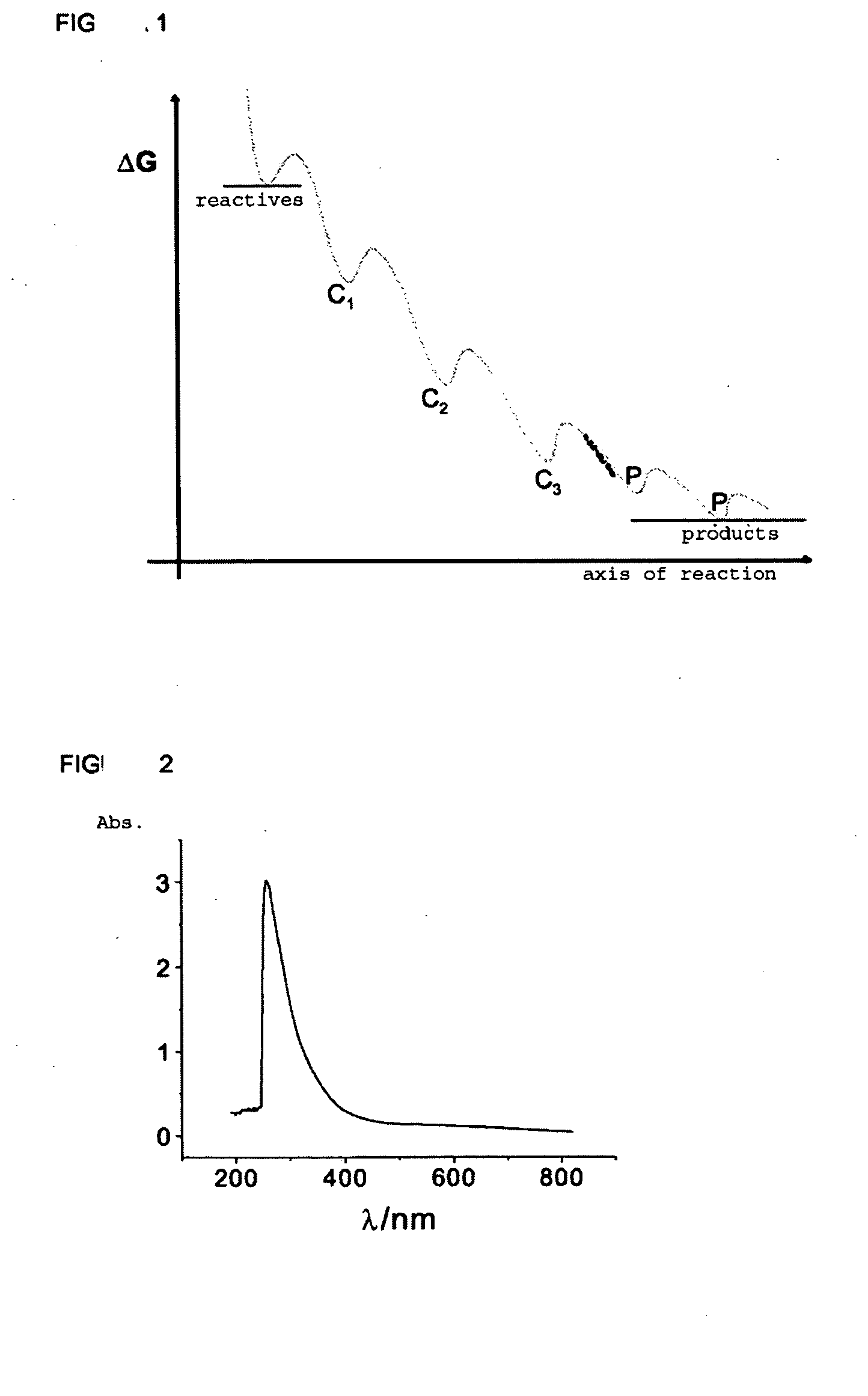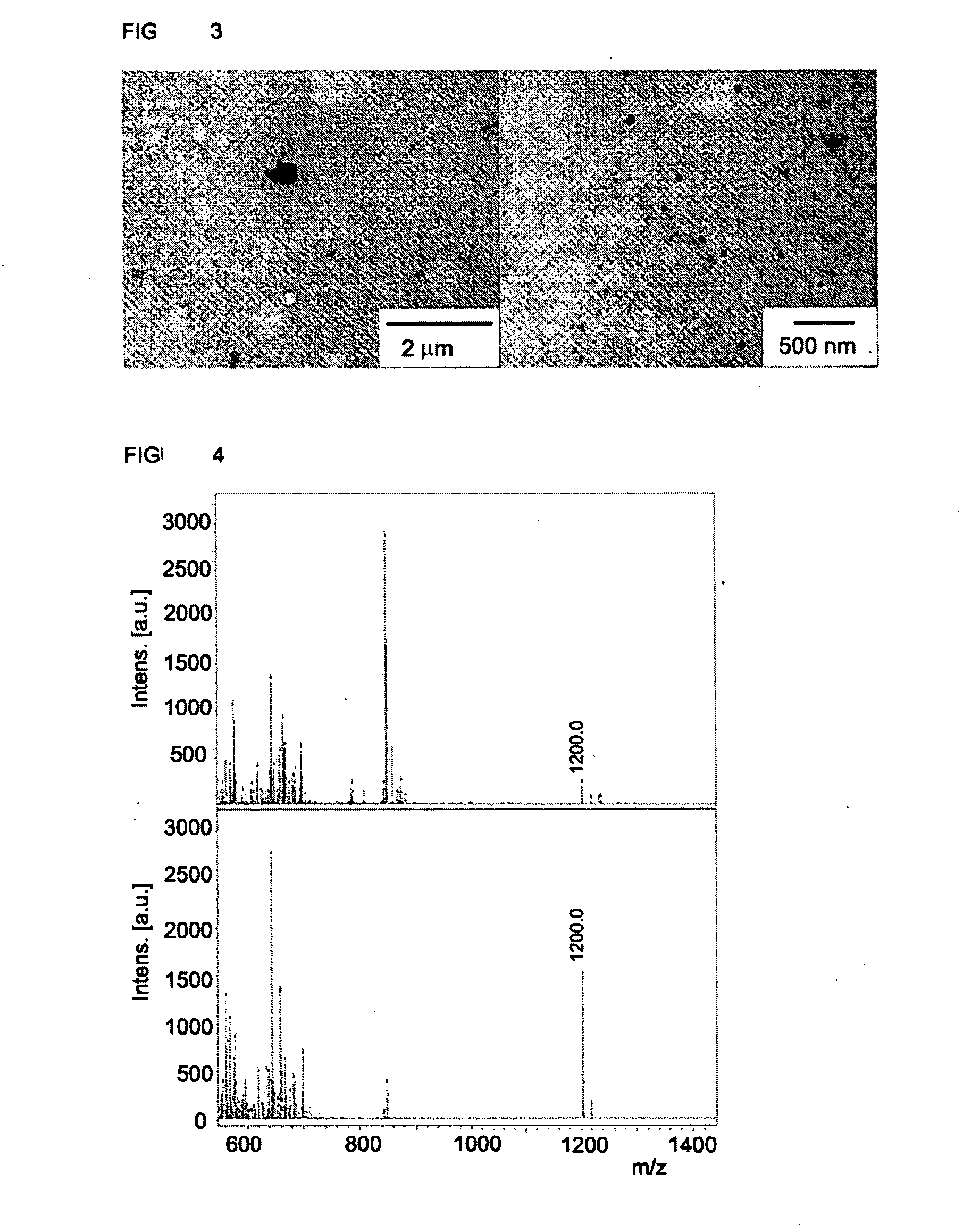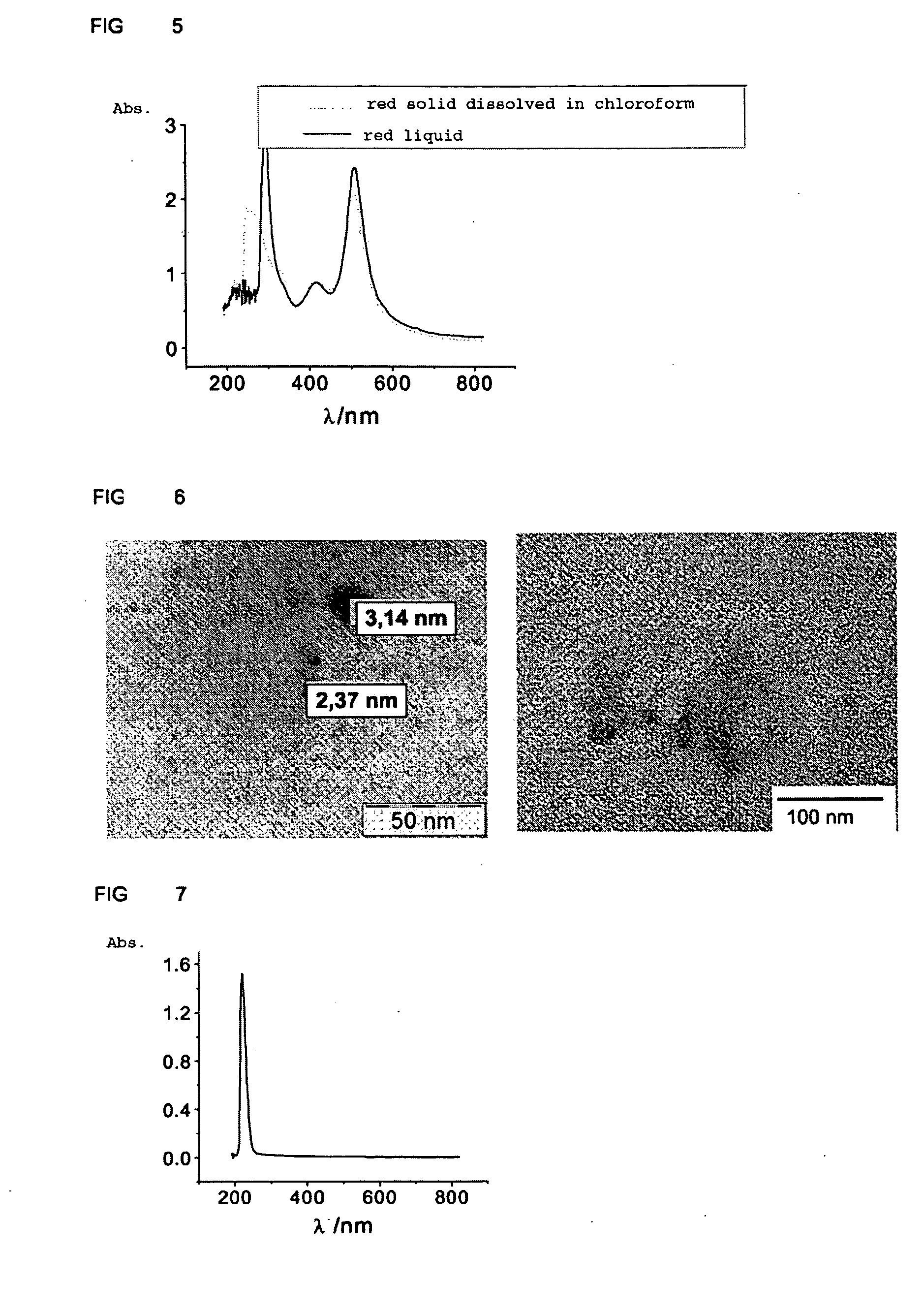Stable Atomic Quantum Clusters, Production Method Thereof and Use of Same
a technology of applied in the field of stable atomic quantum clusters and production methods, can solve the problems of difficult study of their properties and large scale application
- Summary
- Abstract
- Description
- Claims
- Application Information
AI Technical Summary
Benefits of technology
Problems solved by technology
Method used
Image
Examples
example 1
Synthesis of Au AQCs
[0081]The synthesis of Au AQCs was carried out in an electrochemical cell, using galvanostatic potentiometry, applying a constant current density of 0 mA / cm2 during 1000 s, in the following experimental conditions:[0082]Working electrode: Pt (2.5 cm2)[0083]Counter electrode: Au (the metal wherefrom the AQCs are formed)[0084]Reference electrode: Ag / AgCl[0085]Electrolytic solution and stabilizing agent: 0.1 M in tetrabutyl ammonium bromide in acetonitrile.[0086]Temperature: 25° C.[0087]Inert Nitrogen atmosphere
[0088]After the synthesis, the brown coloured AQCs initially obtained (AQCs of 1-2 atoms, as will be seen below) were transferred to an erlenmeyer, and it was observed that after 2 hours they took on a yellow colour, with a precipitate deposited in the bottom. The precipitation of the AQCs occurred due to the limited solubility thereof in the reaction medium.
[0089]These AQCs, predominantly of 3 atoms, separated by precipitation are much more stable that those...
example 2
Synthesis of Ag AQCs
[0097]The synthesis of Ag AQCs was performed by using microemulsions of water / AOT / isooctane (AOT=aerosol OT=sodium bis 2 ethylhexyl sulfosuccinate) in the following experimental conditions:[0098]woratio=[H2O] / [AOT]=6[0099]Solution of AOT in isooctane: 0.1M[0100]Aqueous solution of AgNO3: 0.1M[0101]Aqueous solution of NaH2PO2.H2O: 1M[0102]Temperature: 25° C.
[0103]The synthesis was carried out by mixing two microemulsions, one with the reducer and another with the silver salt. The silver salt microemulsion was prepared by addition of 0.54 mL of the AgNO3 aqueous solution to that of the AOT in isooctane, whilst that of the reducer was obtained by adding 0.54 mL of the aqueous solution of the sodium hypophospite reducer to that of the AOT in isooctane.
[0104]The addition of the AgNO3 microemulsion to the reducer microemulsion was carried out in stirring conditions maintaining the dripping constant for 50 minutes. When that addition was finished, the mixture showed a y...
example 3
Electrocatalytic Activity of Metal Clusters in Oxygen Reduction
[0107]The electrocatalytic activity of metal clusters were verified comparing the voltammetric response in the oxygen reduction.
[0108]The following scheme illustrates the electrocatalytic activity of metal clusters in oxygen reduction:
[0109]This reaction was carried out in acetonitrile solutions, using a polycrystalline Pt microelectrode (diameter=0.5 mm) as working electrode, a counter electrode of Pt and an Ag wire as pseudoreference (E=0.13V vsNHE).
[0110]FIG. 12 shows the behaviour in cyclic voltammetry of the electroreduction of O2 at saturation concentration, in 0.1M tetrabutyl ammonium acetate (TBAAc); in absence curve (a) and in presence curve (b), of silver clusters, Agn (n=3, 4).
[0111]It was verified, as observed in FIG. 12, that, in the presence of clusters, a strong increase in the current around −0.7V was produced, which means that the Ag clusters used are more effective catalysts than the Pt, which is the mo...
PUM
| Property | Measurement | Unit |
|---|---|---|
| sizes | aaaaa | aaaaa |
| size | aaaaa | aaaaa |
| size | aaaaa | aaaaa |
Abstract
Description
Claims
Application Information
 Login to View More
Login to View More - R&D
- Intellectual Property
- Life Sciences
- Materials
- Tech Scout
- Unparalleled Data Quality
- Higher Quality Content
- 60% Fewer Hallucinations
Browse by: Latest US Patents, China's latest patents, Technical Efficacy Thesaurus, Application Domain, Technology Topic, Popular Technical Reports.
© 2025 PatSnap. All rights reserved.Legal|Privacy policy|Modern Slavery Act Transparency Statement|Sitemap|About US| Contact US: help@patsnap.com



